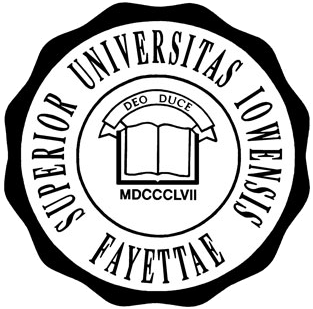
Upper Iowa University (UIU) is a private university in Fayette, Iowa. It enrolls around 6000 students and offers distance education programs that include 15 centers in the U.S., an online program, an independent study program, and centers in Hong Kong, Singapore and Malaysia. UIU has a total student enrollment of more than 6,000 students.

USS Ranger (CV-4) was an interwar United States Navy aircraft carrier, the only ship of its class. As a Treaty ship, Ranger was the first U.S. vessel to be designed and built from the keel up as a carrier. She was relatively small, just 730 ft (222.5 m) long and under 15,000 long tons (15,000 t), closer in size and displacement to the first US carrier—Langley—than later ships. An island superstructure was not included in the original design, but was added after completion.

USS Forrestal (CVA-59), was a supercarrier named after the first United States Secretary of Defense James Forrestal. Commissioned in 1955, she was the United States' first completed supercarrier, and was the lead ship of her class. The other carriers of her class were USS Saratoga, USS Ranger and USS Independence. She surpassed the World War II Japanese carrier Shinano as the largest carrier yet built, and was the first designed to support jet aircraft.

USS Randolph (CV/CVA/CVS-15) was one of 24 Essex-class aircraft carriers built during World War II for the United States Navy. The second US Navy ship to bear the name, she was named for Founding Father Peyton Randolph, president of the First Continental Congress. Randolph was commissioned in October 1944, and served in several campaigns in the Pacific Theater of Operations, earning three battle stars. Decommissioned shortly after the end of the war, she was modernized and recommissioned in the early 1950s as an attack carrier (CVA), and then eventually became an antisubmarine carrier (CVS).

Stansfield Turner was an admiral in the United States Navy who served as President of the Naval War College (1972–1974), commander of the United States Second Fleet (1974–1975), Supreme Allied Commander NATO Southern Europe (1975–1977), and was Director of Central Intelligence (1977–1981) under the Carter administration. A graduate of University of Oxford and the United States Naval Academy, Turner served for more than 30 years in the Navy, commanding warships, a carrier group, and NATO's military forces in southern Europe, among other commands.
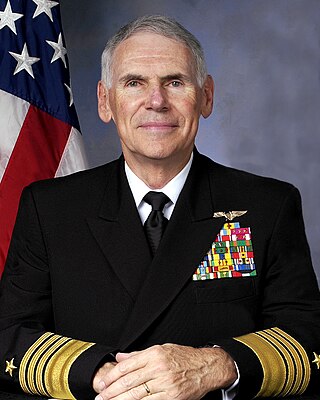
William Joseph Fallon is a retired United States Navy four-star admiral who retired after serving for over 41 years. His last military assignment was as Commander, U.S. Central Command from March 2007 to March 2008. ADM Fallon was the first Navy officer to hold that position. His other four-star assignments include Commander, U.S. Pacific Command from February 2005 to March 2007, Commander, U.S. Fleet Forces Command from October 2003 to February 2005, and 31st Vice Chief of Naval Operations from October 2000 to August 2003. On March 11, 2008, he announced his resignation from CENTCOM and retirement from active duty, citing administrative complications caused in part by an article in Esquire Magazine, which described him as the only thing standing between the Bush Administration and war with Iran.
William Douglas Houser was a United States Navy officer who later served as a telecommunications executive.
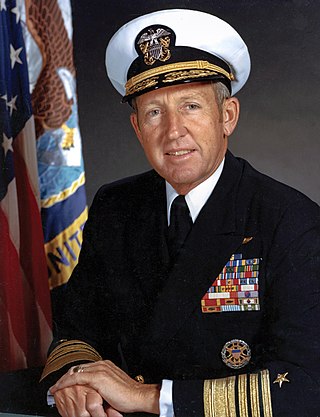
Admiral Thomas Bibb Hayward was Chief of Naval Operations for the United States Navy from July 1, 1978, until June 30, 1982, after which he retired from military service.

Admiral James Oren Ellis Jr. is a retired 4-star admiral and former Commander, United States Strategic Command, Offutt Air Force Base, Nebraska. He was President and Chief Executive Officer, Institute of Nuclear Power Operations until May 2012 and serves on the board of directors of Lockheed Martin.
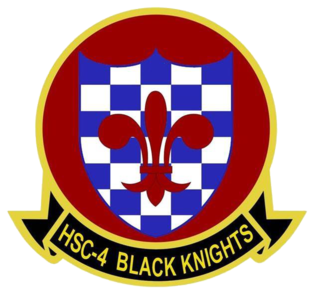
Helicopter Sea Combat Squadron Four (HSC-4), also known as the Black Knights, is a multi-role combat helicopter squadron of the United States Navy based at Naval Air Station North Island which operates Sikorsky MH-60S Seahawk helicopters deployed aboard aircraft carriers. The squadron was originally established as HS-4 on 30 June 1952 at U.S. Naval Auxiliary Landing Field Imperial Beach with the Sikorsky HO3S-1 and was redesignated HSC-4 on March 29, 2012. It is currently assigned to Carrier Air Wing Two (CVW-2) which deploys aboard USS Carl Vinson (CVN-70).

Thomas McClelland is a decorated U.S. Navy veteran who served in the Vietnam War and Operation Desert Storm.
Harold M. Ross is a cultural anthropologist who studied the Baegu community and culture on the island of Malaita in the Solomon Islands. He conducted his field research in the mid-1960s and summarized his research for his doctoral thesis, publishing his work and receiving a PhD in Anthropology from Harvard University in 1970. Following his research Dr. Ross taught Anthropology at the University of Illinois in Champaign Urbana before moving onto positions in academic administration at multiple institutions.

Jacob Lawrence Shuford was a rear admiral of the United States Navy. His career included service in the Cold War, Kosovo War, and Operation Desert Fox. He commanded surface combatants, served on the staffs of the Chief of Naval Operations, the Joint Chiefs of Staff, and the Secretary of the Navy, coordinated Navy legislative activities in the United States Senate, and his final assignment as President of the Naval War College.
Gerald Waylett Thomas was President Emeritus of New Mexico State University, a veteran of World War II, and an author.
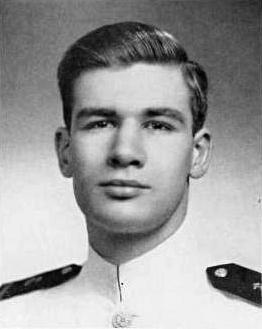
Alexander Graham Bell Grosvenor was a United States Navy pilot, carrier officer, and avid yachtsman credited with promoting the resurgence of sailing at the United States Naval Academy. He was a great-grandson of the inventor, Alexander Graham Bell, and brother of Gilbert M. Grosvenor, former Chairman of the National Geographic Society.

Thomas Albert Cropper is an American retired United States Navy rear admiral and academic administrator serving as president of the California State University Maritime Academy. Cropper was appointed on July 1, 2012 with the rank of honorary rear admiral in the U.S. Maritime Service.

Fighter Squadron 96, or VF-96Fighting Falcons was an aviation unit of the United States Navy in service from 1962 to 1975. When assigned to Carrier Air Wing Nine (CVW-9) their tailcode was NG, and their radio callsign was Showtime. Originally established as United States Naval Reserve squadron VF-791Fighting Falcons on 20 July 1950 it was redesignated VF-142 after becoming a regular squadron on 4 February 1953. It was re-designated VF-96 on 1 June 1962 and disestablished on 1 December 1975.

Dee Leon Mewbourne is a retired United States Navy vice admiral who served as 16th deputy commander of United States Transportation Command between July 2, 2019 and June 29, 2022.
Lowell Cyrus Smith was an American professor and academic administrator, who served as the fourth president of Nichols College from 1978 to 1996. Smith concurrently served as president of Worcester Junior College from 1988 to 1989.














